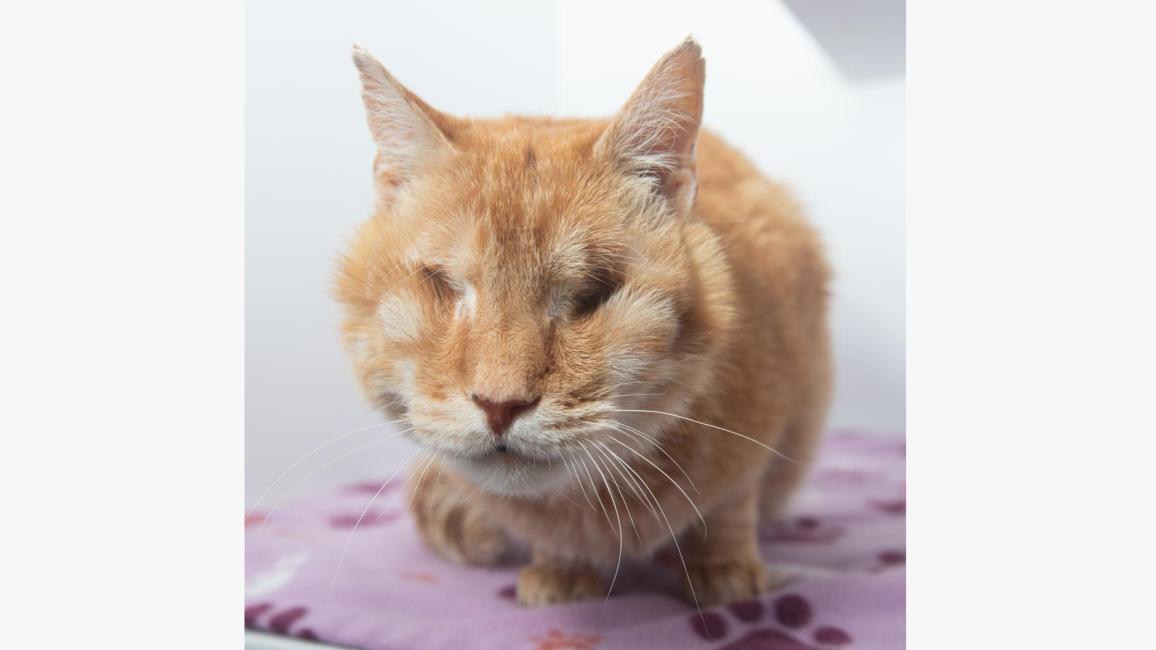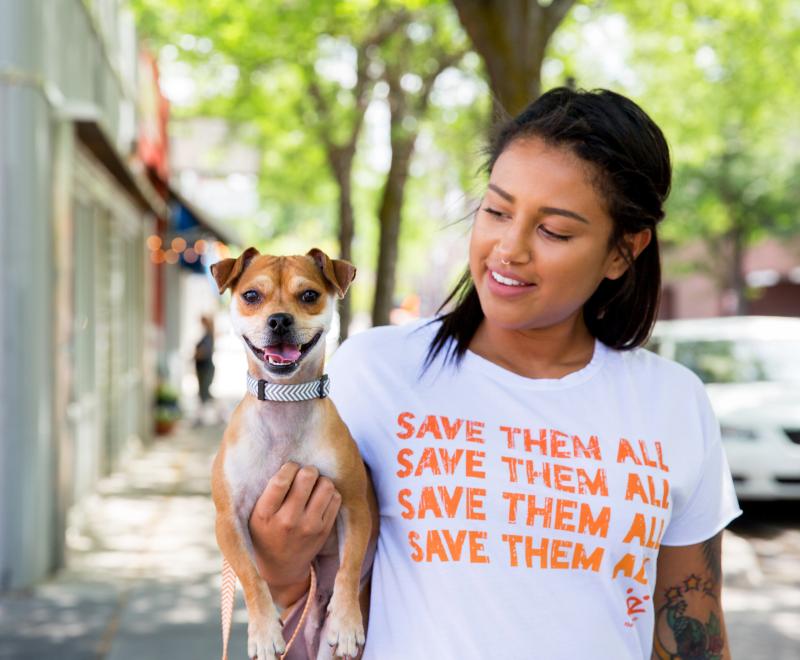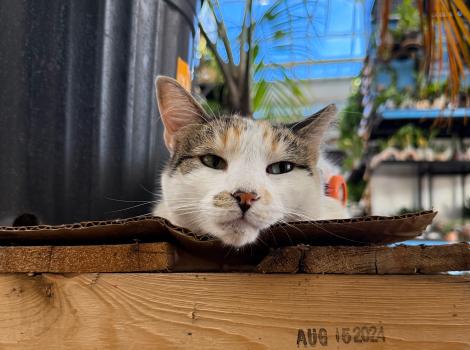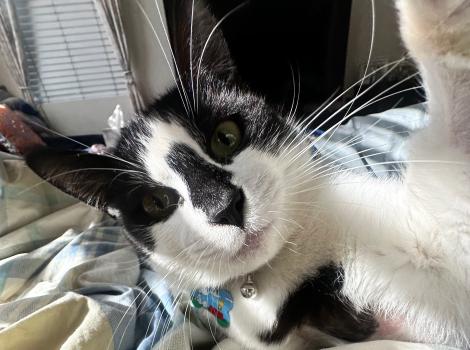Faces of No-Kill: Cat gains doting family after accident

“We just felt like he deserved to have the best life he could have.”
After everything Jack the cat had been through, adopter Marlise and her father, Ron, were determined to give him a home where he could feel happy and safe.
This story is a part of our Faces of No-Kill series, highlighting the journey of pets who lost their place to call home. These pets are thriving today thanks to animal shelters that said yes to lifesaving with a community that found a way to save them. Best Friends’ goal is for every shelter and every community to reach no-kill, and this story shows why that’s so important.
Jack’s harrowing rescue
The orange tabby came to Best Friends from a shelter partner after he was found lying in the road, seemingly having been hit by a car.
“(The emergency vet team) were able to perform a full CT scan, and they did find some pretty significant skull fractures. The good news with those is that none of them required surgeries,” says Dr. Megan McCarthy, Best Friends veterinarian. “Unfortunately, due to the trauma from the hit by the car, Jack’s eyes were damaged beyond repair.”
Jack underwent surgery to remove both of his eyes. The team also placed a feeding tube because of the damage done to his mouth and jaw. Despite waking up in a strange place and being unable to see, Jack was so sweet and trusting of his caregivers.
This brave boy spent the next two months in foster care to heal from his injuries. As animals tend to do, Jack quickly adjusted to his new reality without sight. He found his bearings, learned to navigate the house, and won over everyone with his affectionate personality.

A home where he belongs
Shortly after returning to the lifesaving center, Jack caught the attention of Ron Taggart.
“When I first saw him, I didn’t even notice he was blind. I just thought he’s a good cat and he deserves to be loved,” says Ron.
After talking it over with his daughter, Marlise Taggart-Anderson, they decided to adopt Jack. Knowing a blind kitty would soon be part of their family, they prepared their home to accommodate him.
“We were a little nervous. What do we need to do different? We had to go through our house and eliminate any possibility of him getting trapped,” says Ron.
[Healing help for scared, blind cat]
Marlise and Ron slowly introduced Jack to his new home and their other cats over the course of several days. With a mix of caution and curiosity, he felt his way through the house. Meanwhile, his new family focused on the basics.
“It’s learning how to make his life the best it could be. It’s developing the patience of making sure he knows he can get down the steps, making sure he knows where the steps are to get back up so he can get to his food and water and things,” says Marlise.
Then came the moment everyone was eagerly awaiting: snuggle time. At first, Jack was understandably skittish when someone approached. While he could hear and smell his humans, he couldn’t see when they were about to touch him. So Marlise got the idea to teach Jack the verbal cue “touch.”
[Blind cat sees the good in everything]
“When we say, ‘Jack, touch,’ the next thing that’s going to happen is he’s going to have a physical contact,” says Marlise. “He picked that up very, very quickly.”
Today, not only is Jack comfortable with being petted, but he even likes to be carried around like a baby. At home with his people and feline friends, Jack is one happy, confident cat. He proves that pets with disabilities make exceptional companions; it just takes someone to give them a chance.
“It doesn’t matter if he’s blind or anything else,” says Ron. “He deserves a home, a place that will care for him. And so we thought, we can do that.”

Let's make every shelter and every community no-kill in 2025
Our goal at Best Friends is to support all animal shelters in the U.S. in reaching no-kill in 2025. No-kill means saving every dog and cat in a shelter who can be saved, accounting for community safety and good quality of life for pets.
Shelter staff can’t do it alone. Saving animals in shelters is everyone’s responsibility, and it takes support and participation from the community. No-kill is possible when we work together thoughtfully, honestly, and collaboratively.







